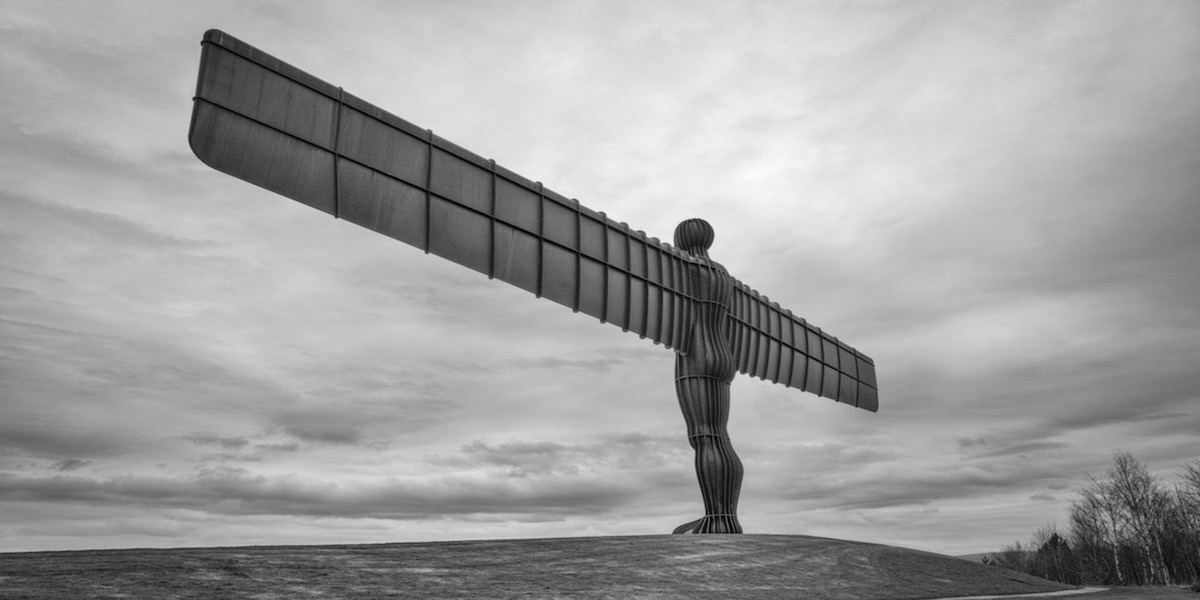The Twentieth Century Society is ‘dismayed’ following an application to list Antony Gormley’s Angel of the North was turned down by Historic England. The C20 has said that there could be ‘dangerous repercussions’ for many other important monuments. The C20 became concerned when a widening scheme for the A1 Motorway at the Birtley to Coal House stretch of road in Gateshead adjacent to the site-specific statue was submitted.
Antony Gormley’s Angel of North is one of Britains best-loved artworks
C20 Director Catherine Croft said, “We had an almost instantaneous rejection from Historic England which we are concerned about as we thought it was a very strong contender for listing—many statues and works of public art are protected in this way even though they are not strictly speaking “buildings” as there is no alternative method available. However, if a building or sculpture under 30 years old is to be taken forward by HE, it has to be both outstanding and under threat, and we were told that a threat to the setting alone (as opposed to demolition of the structure itself) was not enough to trigger a full listing assessment on their part. We appreciate that with limited staff resources, they need to prioritise, but once key views are blocked, there is often no going back. It’s not just sculptures which are vulnerable in this way; it means that however fantastic a building might be, it won’t be possible to get it listed if a massive new development is proposed right next door.”
The Angel of the North is one of Britains best-loved artworks. Its iconic status was further reinforced in 2008 when it topped the poll as the UK’s most recognisable landmark. It is in the same league as Big Ben and Stonehenge) another national survey found and has won numerous awards, including the 1999 South Bank Show Award for Visual Arts, and the Civic Trust Award in 2000. I
In 1996 £800,000 was raised for the sculpture Arts Council England (£584,000), and an EU’s European Regional Development Fund (£150,000) and Northern Arts (£45,000)
The Angel of the North is Britain’s largest sculpture.
Historic England says: “We are the public body that helps people care for, enjoy and celebrate England’s spectacular historic environment.
We protect, champion and save the places that define who we are and where we’ve come from as a nation. We care passionately about the stories they tell, the ideas they represent and the people who live, work and play among them.
Working with communities and specialists, we share our passion, knowledge and skills to inspire interest, care and conservation, so everyone can keep enjoying and looking after the history that surrounds us all”.
Antony Gormley was born in 1950 in London, England, where he lives and works. He has participated in significant group exhibitions, including the International Sculpture Biennale of Carrara, Italy (2008 and 2010); the Sydney Biennale (2006); Documenta VIII, Kassel, Germany (1987) and the Venice Biennale (1982 and 1986). Solo exhibitions include Forte Belvedere, Florence (2015); Zentrum Paul Klee, Bern (2014); Middelheim Museum, Antwerp (2013); Centro Cultural Banco do Brasil, São Paulo, Rio di Janeiro and Brasilia (2012); Deichtorhallen, Hamburg (2012); State Hermitage Museum, St. Petersburg (2011); Kunsthaus Bregenz, Austria (2010); Artium, Valencia (2009); Kunsthall Rotterdam, Musée d’Art Moderne De Saint-Etienne Metropole, France and MARCO, Monterrey, Mexico (2008); Hayward Gallery, London (2007); MADRE, Naples (2006); Calouste Gulbenkian Foundation, Lisbon (2004); Baltic Centre for Contemporary Art, Gateshead, England (2003) and the National History Museum, Beijing (2003). Major public works include the Angel of the North, Gateshead, England; Another Place, Crosby Beach, England; Exposure, Lelystad, The Netherlands; Chord, MIT – Massachusetts Institute of Technology, Cambridge, MA, USA. He was awarded the Turner Prize in 1994 and made an Order of the British Empire (OBE) in 1997. He is an Honorary Fellow of the Royal Institute of British Architects and has been a Royal Academician since 2003.
Photo: Duncan Herring Via Twitter

